Abstract
The activity of the hydrophilic Vibrio sp. strain DW1 and the hydrophobic Pseudomonas sp. strain S9, which both undergo starvation-induced responses, was examined at nutrient-enriched and nutrient-deficient interfaces. The initial period of response to a starvation regime (“dwarfing” phase) is a sequence of two processes: fragmentation and continuous size reduction of the fragmented cells. This dwarfing phase is also one of intense metabolic activity as supported by O2 uptake measurements of the endogenous metabolism and the use of inhibitors of the proton flow, the electron transport chain, and membrane-bound ATPase. Hydrophilic bacteria become even smaller at nutrient-deficient surfaces than in the liquid phase upon starvation, and this is reflected in a higher endogenous metabolism exhibited by surface-associated cells compared with those in the liquid phase. On the other hand, hydrophobic bacteria dwarfing at surfaces did not exhibit a greater size reduction and exhibited an endogenous metabolism that was only slightly higher than that of cells in the liquid phase. Bacterial scavenging of surface-localized nutrients is related to the degree of irreversible binding of dwarf and starved bacteria, which in turn may be related to the degree of cell surface hydrophobicity.
Full text
PDF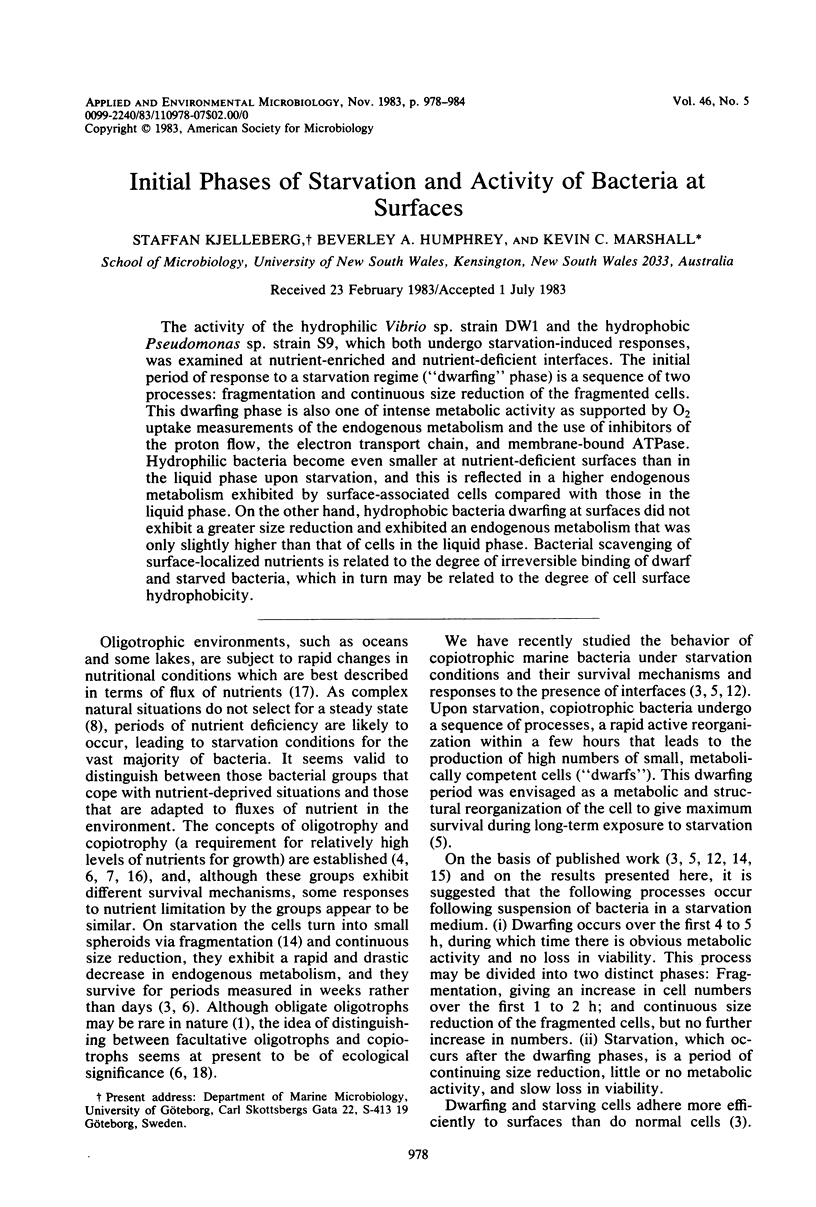


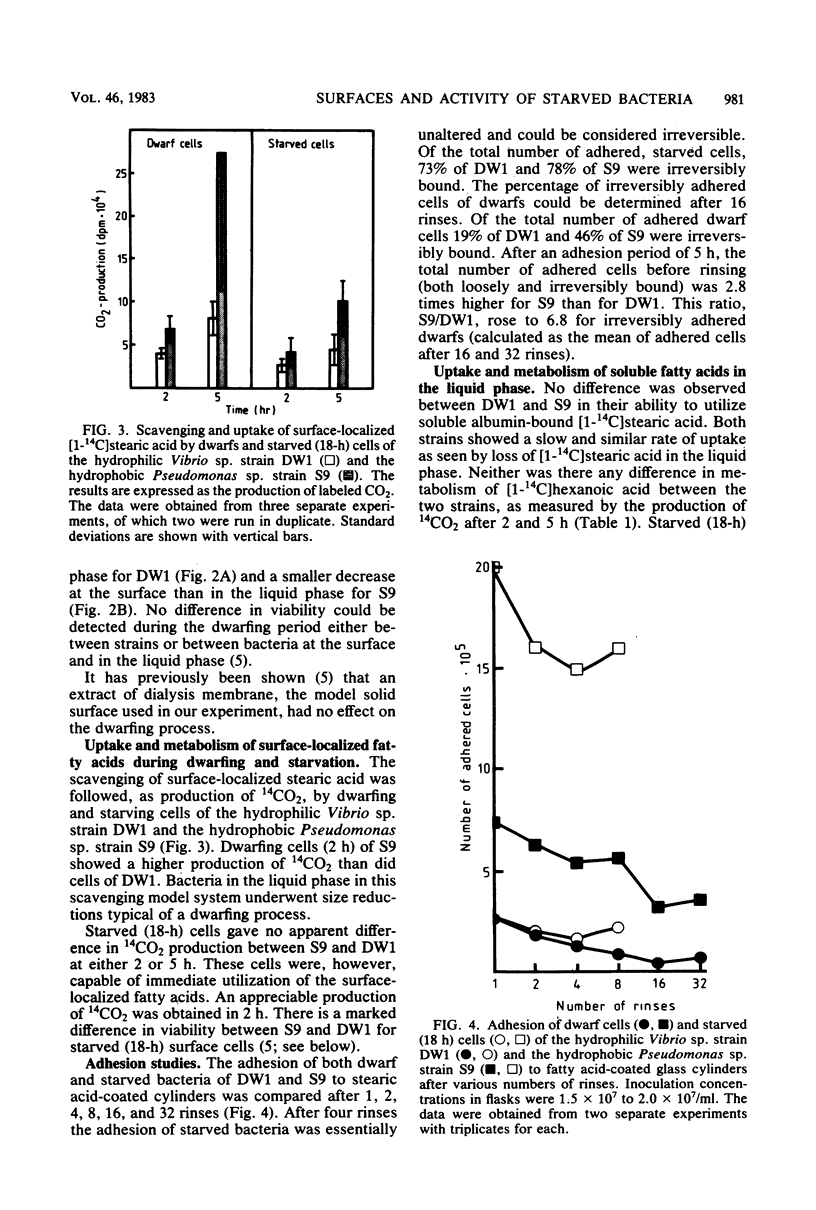
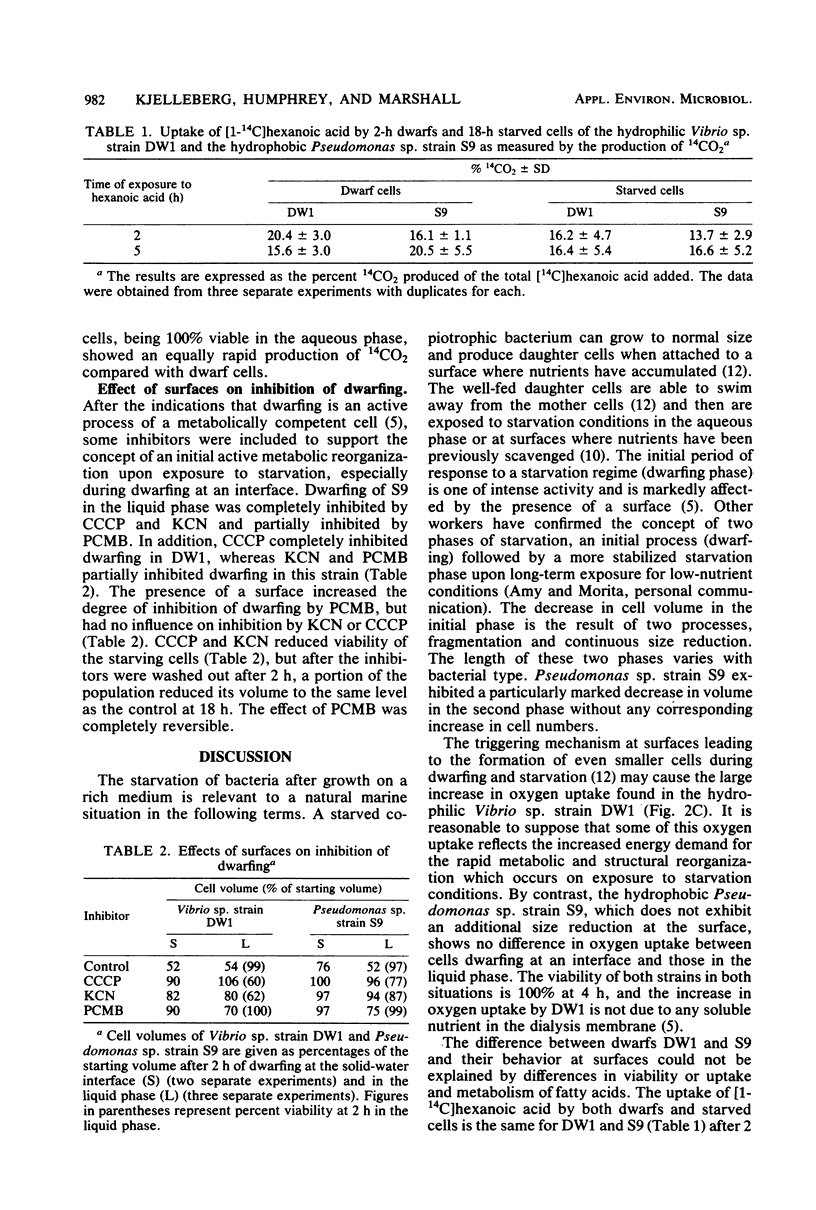
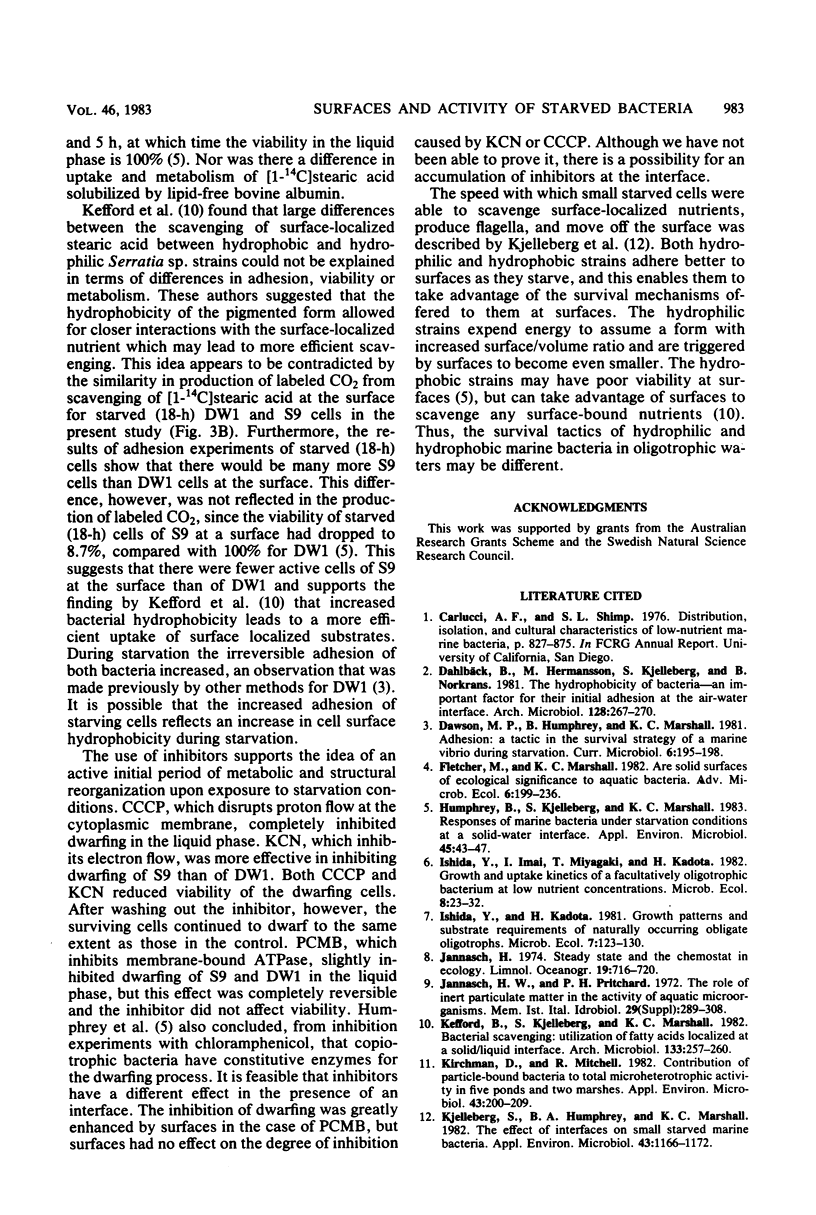
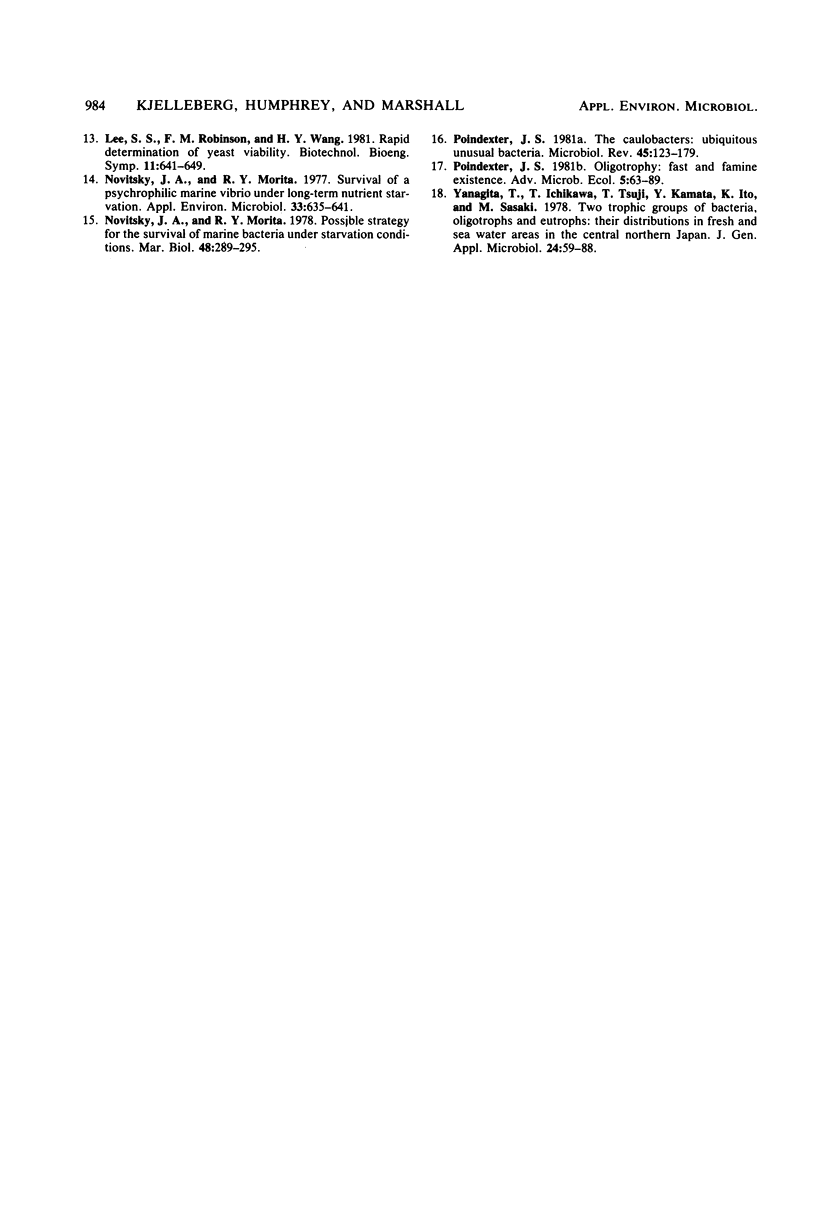
Selected References
These references are in PubMed. This may not be the complete list of references from this article.
- Dahlbäck B., Hermansson M., Kjelleberg S., Norkrans B. The hydrophobicity of bacteria - an important factor in their initial adhesion at the air-water interface. Arch Microbiol. 1981 Jan;128(3):267–270. doi: 10.1007/BF00422527. [DOI] [PubMed] [Google Scholar]
- Humphrey B., Kjelleberg S., Marshall K. C. Responses of marine bacteria under starvation conditions at a solid-water interface. Appl Environ Microbiol. 1983 Jan;45(1):43–47. doi: 10.1128/aem.45.1.43-47.1983. [DOI] [PMC free article] [PubMed] [Google Scholar]
- Kirchman D., Mitchell R. Contribution of particle-bound bacteria to total microheterotrophic activity in five ponds and two marshes. Appl Environ Microbiol. 1982 Jan;43(1):200–209. doi: 10.1128/aem.43.1.200-209.1982. [DOI] [PMC free article] [PubMed] [Google Scholar]
- Kjelleberg S., Humphrey B. A., Marshall K. C. Effect of interfaces on small, starved marine bacteria. Appl Environ Microbiol. 1982 May;43(5):1166–1172. doi: 10.1128/aem.43.5.1166-1172.1982. [DOI] [PMC free article] [PubMed] [Google Scholar]
- Novitsky J. A., Morita R. Y. Survival of a psychrophilic marine Vibrio under long-term nutrient starvation. Appl Environ Microbiol. 1977 Mar;33(3):635–641. doi: 10.1128/aem.33.3.635-641.1977. [DOI] [PMC free article] [PubMed] [Google Scholar]
- Poindexter J. S. The caulobacters: ubiquitous unusual bacteria. Microbiol Rev. 1981 Mar;45(1):123–179. doi: 10.1128/mr.45.1.123-179.1981. [DOI] [PMC free article] [PubMed] [Google Scholar]


